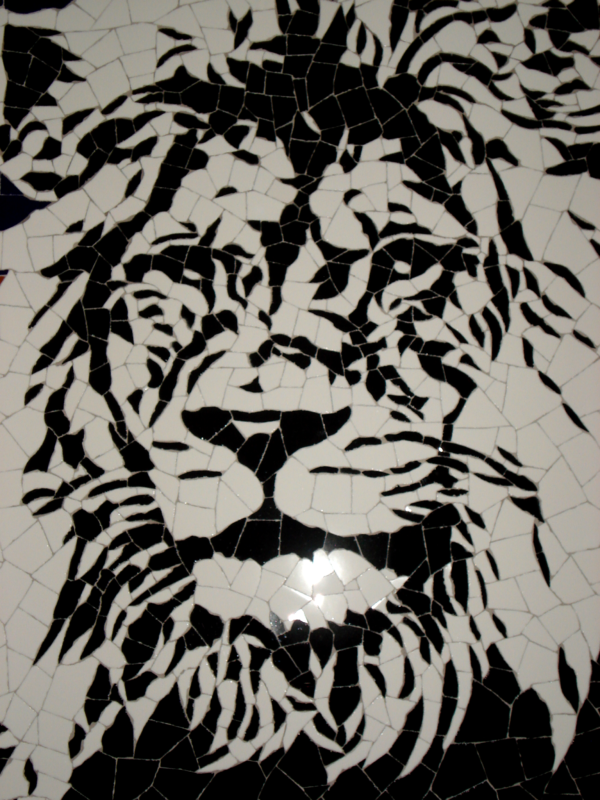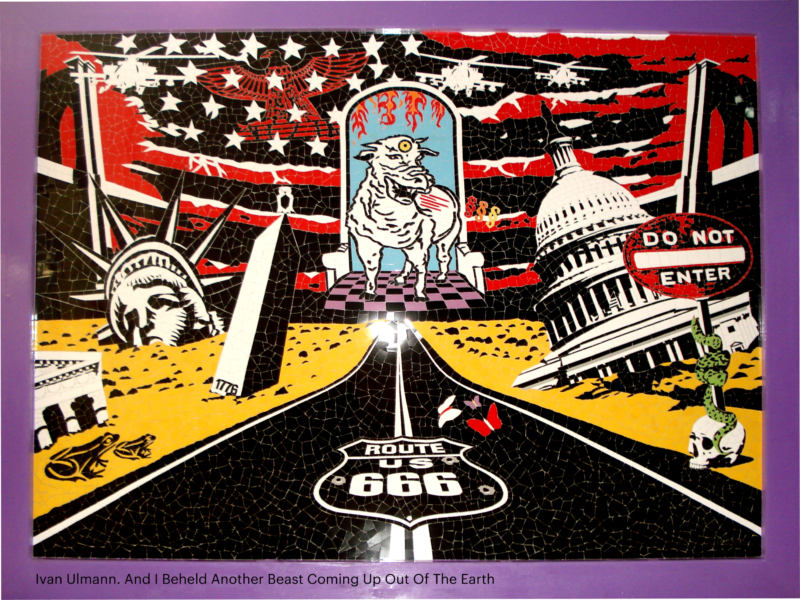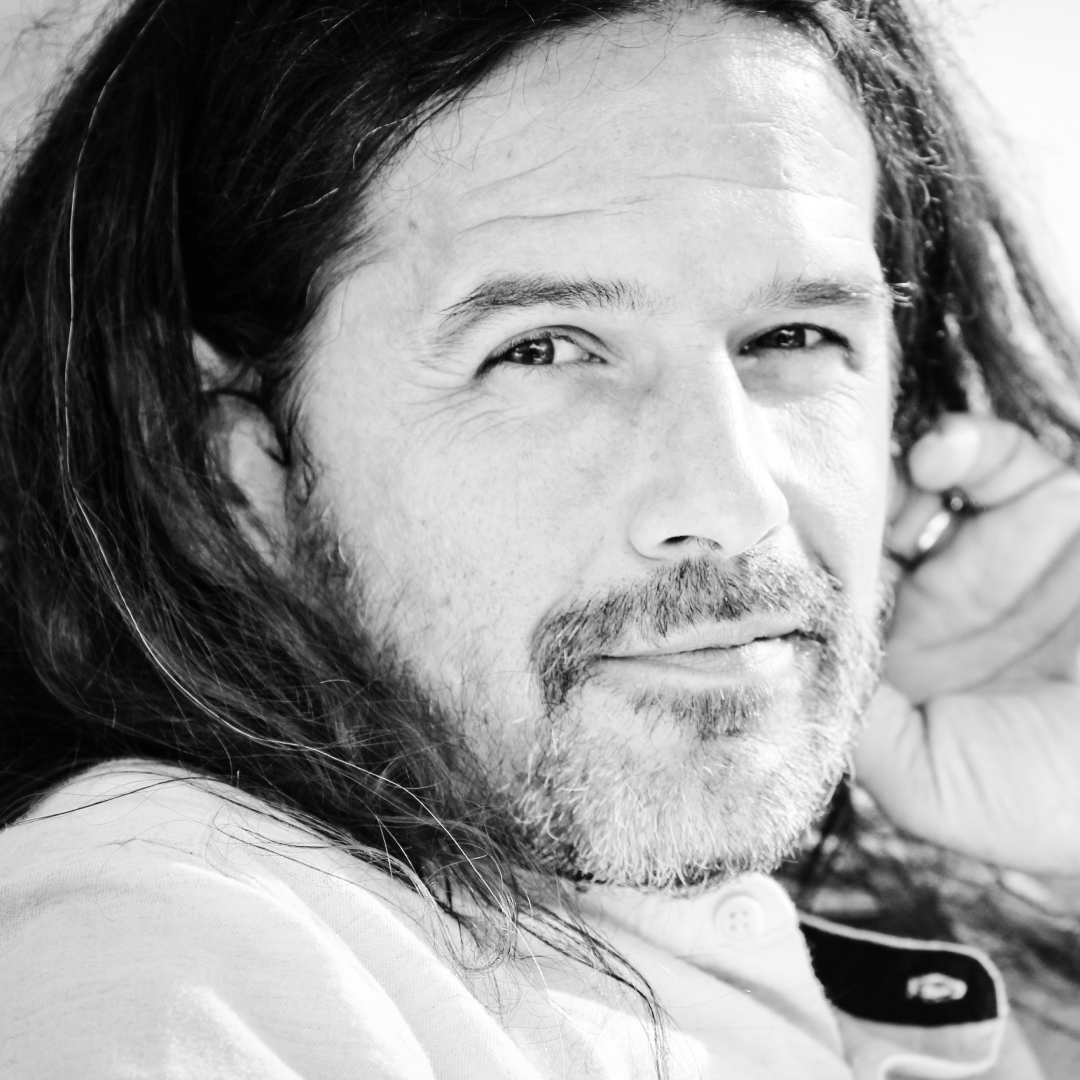Swiss-born Ivan Ulmann moved to Portugal as a young man and has lived there since. He creates tile mosaics inspired by Portuguese culture, pop art, and Gaudi, skillfully revisiting and blending these diverse legacies. Fine Art Shippers spoke with him about his love for fragmentation and piecing elements together, the rise and fall of empires, and uniting hearts
Artist Talk: Ivan Ulmann, A Cheating Puzzle Maker
Why did you choose mosaic as your main medium?
Ivan Ulmann: From a young age, I was into arts, painting, drawing, and sculpting. When I was in my early twenties, I got an injury from extensive stone-breaking, which resulted in tendinitis. This meant I had to reconsider my medium, as working with stone became impossible. Living in Portugal, I was drawn to its ceramic tile tradition. Mixing this with the influence of Gaudi and inspirations from pop art icons like Warhol, I started to make mosaics in my own style.
What kind of tiles do you use? Are they modern or vintage?
I buy traditional Portuguese tiles that come in various colors and designs. I break them into pieces and then shape them further. Afterward, I sand each tile piece to ensure they fit together perfectly without gaps, which could reduce the image's intensity. The aim is to convey the broken effect without making it the first thing you notice.
You call yourself a “cheating puzzle maker.” What do you mean by that?
When people first see my works, they often compare them to puzzles. However, they are not like traditional puzzles where each piece has a designated place. Instead, I reshape pieces to fit where I believe they belong. By cutting, sanding, and shaping the pieces, I "cheat" in a way, since in typical puzzles, you don’t make such transformations.

In what way have life in Portugal and its culture and environment impacted your art and your art vision?
I think that had I stayed in Switzerland, I wouldn't have become an artist. Moving away from my homeland at the age of twenty exposed me to an entirely new culture, language, traditions, and mindset. The shift was particularly impactful since my entire family left Switzerland with me. This quest for a new beginning, a new "paradise," shaped my life. It gave me the liberty, space, time, and resources to dedicate myself fully to art.
You are currently working on a large-scale theological project. Could you share some details of it?
During my time working primarily with sculptures, I felt constrained in expressing some ideas that I reflected upon. Creating large and detailed mosaic panels allowed me to convey such messages. Over the last seven years, I've produced eight large mosaics that explore the rise and fall of various empires that have shaped our beliefs, traditions, philosophies, and theologies. Often, we follow these beliefs without understanding their origins. This series encourages viewers to think about these influences on their own identities and beliefs.
Which empires have you included in the series and why?
I began my series with Babylon, followed by the Persian Empire. The latter was overtaken by the Greek Empire, which, in turn, gave way to the Romans. As the Roman Empire waned, Europe transitioned into the Middle Ages. This period then evolved into the Renaissance and the Enlightenment, setting the stage for the French Revolution and its secular ideals. All of this ultimately culminated in the rise of the United States of America, which, in my belief, has drawn elements from each of these preceding empires.
Such work requires a lot of research. What are your sources?
My initial inspiration comes from the Bible’s Book of Daniel. Then I read a lot of history studies, delving into the socio-economic landscape and the philosophical theological systems of the eras I was going to portray.
Can you tell me about your creative routine? Do you have any personal rituals?
I have a studio where I spend most of my time. It's my sanctuary, my private realm. My pieces require significant time and focus to produce, so I try to minimize interruptions and distractions when I work.
Do you sketch your pieces before you proceed to make a mosaic?
Certainly, I start with multiple sketches. I then finalize the designs on a computer before transferring them onto wood. After sketching, I apply the mosaic based on the planned colors, contrasts, lights, and shadows. Unlike traditional painters who can smoothly blend shades, I can't do this with mosaics. Just like in pop art, which is one of my inspirations, light and dark are separated by distinct lines.

What do you find most attractive about pop art and the related period in art history?
Pop art, with its vivid colors and iconization of celebrities, was truly revolutionary. It reflected the societal shifts of the fifties when technology began to play a more significant role. This art movement not only mirrored society's progression towards modernity but also greatly impacted the marketing sector, reshaping how publicity was approached. Art influenced culture, which in turn impacted society.
Lastly, what does your slogan “Broken tiles for United Hearts” mean to you?
It’s about recognizing our imperfections. By acknowledging that none of us is perfect and we all have our flaws, we can find unity in our shared vulnerabilities. Famous or not, rich or poor, and whatever the color of our skin, in our brokenness and imperfection, we are all united.
Interview by Inna Logunova Photo courtesy of Ivan Ulmann
